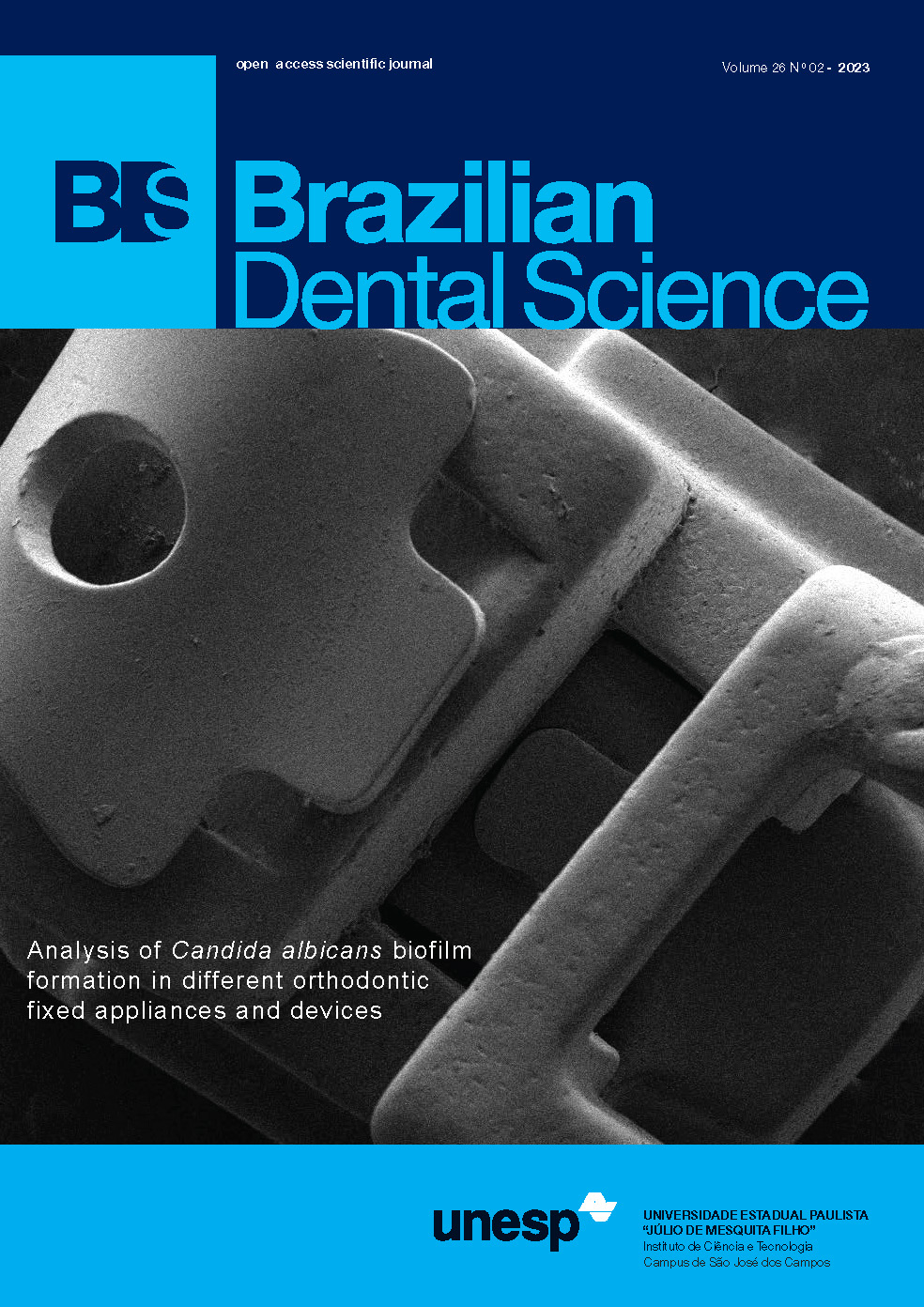Evaluation of EDM inclusion into the conventional polishing of printed Co-Cr alloy by selective laser melting
Conventional polishing aided by EDM
DOI:
https://doi.org/10.4322/bds.2023.e3562Abstract
Objective: The selective laser melting (SLM) technique used in manufacturing results in a rougher surface that requires more satisfying processing than conventional hand-finishing operations. The electro discharge machine (EDM) has various possibilities in the adjustment of surfaces. The present study assesses whether the participation of the EDM technique with the conventional finishing and polishing methods enables surface improvement for the Cobalt- Chromium alloy fabricated by SLM. Material and Methods: Twenty discs of cobalt chromium alloy were fabricated by SLM, divided equally into two groups: (TF) control group for finishing and polishing in the conventional method in accordance with the manufacturer’s recommendations; and (EF) group for conducting polishing incorporating the EDM method. Results: The EF group recorded the lowest mean value of surface roughness and the highest mean value of micro hardness compared to the TF group. Furthermore, statistically significant differences (P < 0.05) were found for surface roughness as well as micro hardness. Conclusion: Reliance of the electric discharge machine proactively within finishing and polishing procedures promotes competence in the conventional polishing method and improves the surface properties of cobalt chromium alloy printed by SLM technology.
KEYWORDS
Dental finishing; Cobalt-chromium alloy; Selective laser melting; Electric discharge machine; Additive manufacturing.
Downloads
Published
How to Cite
Issue
Section
License
Brazilian Dental Science uses the Creative Commons (CC-BY 4.0) license, thus preserving the integrity of articles in an open access environment. The journal allows the author to retain publishing rights without restrictions.
=================




























